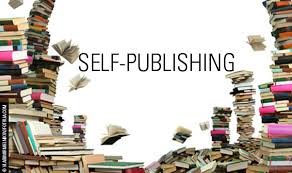Hello everyone! Welcome to part 3 of my Look At A Book sequence! In this section, I’ll be talking about what goes into PUBLISHING a book.
So you’ve A) Written a Book and B) Edited a Book
AWESOME!! Great work!
Now what?
There are different routes you can take to publish your book: traditional, small press, or self-published/indie.
Traditional publishing is through a large publisher. Usually you need an agent to even get noticed with their company. They are very tough with who they let into their special club, but there are some perks; mainly that you can say that “so-and-so” is your publisher. Big names still hold weight. They also can handle publishing more titles (over a hundred a year), have more sway with bookstores (B&N anyone?), and can afford printing more books to reduce cost because their start-up funding is already established. They cover all your printing, shipping, and ad costs so you don’t have to.
Small presses (such as the one I co-founded, Buzz & Roar Publishing) are what they are named: smaller. Most average 1-10 titles a year. They tend to be selective about what they choose, but are more willing to take risks on debut authors. The best small presses I know focus their books in certain areas, don’t spread themselves too thin, and have a strong marketing strategy for sales. Different presses offer different incentives, too, but most still pay to print your books, format, do final edits, and marketing.
Self-published/indie publishing is exactly that: you do it yourself or use a format (like CreateSpace) to print-on-demand your books. You take in all the profits (minus any fees and cost of printing), but you also pay for all the editing, marketing, cover design, and formatting yourself.
Here’s an example using my book, ILLUSION:
ILLUSION cost me $3.75 per book to print, having printed the bulk bundle of 600 books. That means I had to pay $2,250 out of my own pocket just to GET the books.
I sell the books for $14.95, which, after printing costs, means I make $11.20 per book.
If I am self-published, I would get all of that money.
With my small press, I make 40% of that cut and the rest goes to the publishing company, so I make $4.48 per book.
With a traditional press (let’s say I don’t have an agent), I make 30%, so I make $3.36 per book. If I have an agent (an additional 10%), I will make $2.24 per book.
In terms of SALES:
To make $2,000 a month (which is $24,000 a year, a livable salary for a single person), you would have to sell:
a) 179 copies self-published (or 2,148 per year)
b) 445 copies through a small press (5,340 per year)
c) 596 copies (or 893 with an agent) with a traditional publisher (7,152//10,716 per year)
If you think about this though: the average self-published book sells 250-300 books in its LIFETIME, small press closer to 1,000, and big publishers around 5,000. (Publishers Weekly) With these numbers, how can authors POSSIBLY make any money?
And don’t forget, this is at FULL COVER PRICE. Bookstores usually take 40% off the cover, publishers/authors offer promotions that lower the price, and shipping is sometimes paid out-of-pocket, especially if the book is given for free if sending to reviewers, libraries, or giveaway winners.
And yet, we do it. We hope we are the author that sells 10,000 copies every year. Or that our series will garner interest so we’ll sell 3x as many books when #2 in the series comes out and they’ll make a movie out of it. It’s not an easy, or money-making kind of life. (And remember, this is for PRINT versions, not ebooks, which is why many people don’t even offer print versions of their books.)
Each road is tough for different reasons. Traditional publishing can take months, even years from your first acceptance letter to your book in print. Small presses may get overwhelmed and not devote ample time to your book and its release. Doing it yourself may leave you working more hours at your job, away from writing, just to pay for all the material expenses and ads.
So how do you know which one is right for you?
You kind of have to feel it out.
What I do know is this: no matter which route you decide to take, you WILL have to market your book yourself, even with a big traditional publisher backing you up.
So how to do that? And what goes into it? How much does it cost?
Stay tuned for the final section: Part 4: A Look At Marketing!






Pingback: A Look at a Book: Part 4 Marketing a Book | Christa Yelich-Koth
eeeeek! a hard road to hoe, indeed! great info, christa. thanks.
Yup, some of the figures surprised me as well!